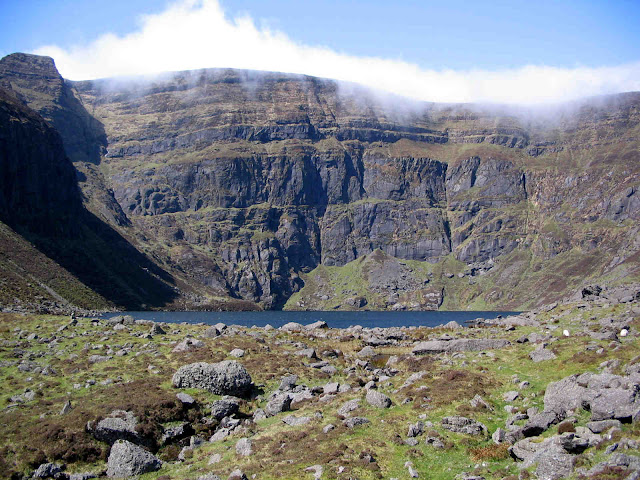
Comeragh Glacial Features Outside of Kerry and Wicklow, the Comeraghs is one of the most spectacularly glaciated areas in Ireland. The nine square kilometre area of the Central Comeragh Plateau is encircled by no less than nine coums. Surely this makes it one of the most glaciated pieces of real estate in Ireland! Here is some information on some of the glacial features to be found on our local mountains. Dramatic View down to Coumduala from Knockanaffrin Ridge What is a “coum”? A Coum (“com” in Irish, “corrie” or “coire” in Scots` Gaelic, “cirque” in French and “cwm” in Welsh) is the birth place of a mountain glacier (a river of ice). How old are the Comeragh coums? Hard to be definitive but, according to Frank Mitchell, one of Ireland`s leading authorities on glaciation, most of the ice sculpting was done between about 300,000 and 130,000 years ago with some reshaping in more recent times. How many coums in the Comeraghs? Debatable but there are at least 14. Here go...
